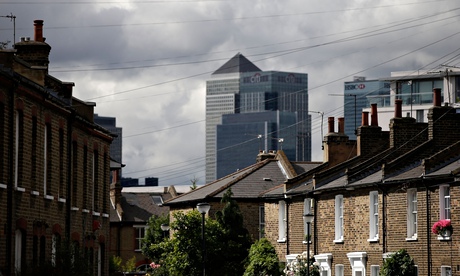
Britain has form when it comes to housing bubbles. Since the early 1970s, there have been powerful booms that have been followed by painful busts. Between them, George Osborne and Mark Carney are trying to avoid a fourth.
The problem is simple. Britain is a relatively small island with a relatively large – and growing – population. It has tough planning controls that prohibit development on green belts around the country's major cities, and it has a tax system that provides incentives for people to buy bricks and mortar.
Even in normal circumstances, keeping demand and supply in balance is hard to achieve, which is why house prices have tended to rise more quickly than the cost of living overall. But it is when money becomes cheap and readily available that the fun really starts. Demand surges, driving up prices, leaving borrowers and the banks that lend to them vulnerable to a crash. That crash comes either when borrowers find the market too hot or when the Bank of England decides that there is a spillover into the rest of the economy and jacks up interest rates in response.
The problem with interest rates, though, is that they are a blunt instrument. Threadneedle Street could kill off the property boom by raising borrowing costs to punitive levels, but it has to be aware that there will be collateral damage to the rest of the economy. And with output only just back to the levels it was at before the economy plunged into recession six and a half years ago, both Osborne and Carney want interest rates to be the weapon of last resort.
What we have instead is a walk down memory lane to the 1950s and 1960s. Back then, governments of both left and right took action to boost supply and restrict demand, with the result that house prices rose only gently in the first 25 years after the second world war. There were no property booms and no property busts. Fashionable London dinner parties did not think what was happening to the price of a home in Stoke Newington or Dulwich was remotely interesting.
On the supply side, the 1950s saw the number of new council homes peak at 300,000 a year. Greater affluence also led to more private homes being built, so that by the mid 1960s house building peaked at more than 400,000 a year.
There were also measures for curbing demand. The Treasury and the Bank used an array of credit controls to limit how much lenders could provide and how much individuals could borrow. Building societies, the main providers of mortgages, operated as a cartel, all offering the same rate.
The new arrangements announced by Osborne in Thursday's Mansion House speech hark back to this pre-bubble age. He is trying to boost the supply of homes by forcing councils to free up brownfield sites for development. And he is giving the Bank back the power to give orders to lenders about how much they can lend to first-time buyers. The Bank's financial policy committee meets next week to consider whether rising house prices present a significant risk and what – if any – action is warranted.
But the proposed shake-up of planning will at best result in 200,000 homes being built. The prospect of a return to the days when 400,000 homes were being built each year looks a long way off. Osborne's critics, such as the free-market Institute for Economic Affairs, say that he needs to be bolder by giving developers the right to build on the green belt, which is more than twice the size of Britain's urban footprint.
Others say that supply is not the issue at all. Danny Gabay, of the economic consultancy Fathom, says the number of new homes has been increasing at 0.6% a year, precisely the same rate at which the population has been increasing. The problem, Gabay says, is all on the demand side. "The high level of house prices in the UK, relative to incomes, has nothing to do with a shortage of housing and everything to do with a combination of exceptionally low mortgage rates, and subsidised access to mortgage credit."
Neither Osborne nor Carney thinks there is going to be a rapid increase in the number of new houses built. Both know that an increase in interest rates is inevitable at some point, and the Bank's governor went out of his way on Thursday to warn that this might be sooner than people think.
What concerns them is that household debt is at high levels despite the efforts of many borrowers to reduce their financial exposure since the crash. Loan to income ratios for first-time buyers are already at record levels. Clearly rates are not going to remain at 0.5% for ever. Given that even relatively modest rises in rates will hurt, the aim is to use macro-prudential tools (as credit controls are now called) to limit both the pace at which borrowing costs rise and the level that they have to rise to. Hence the walk down memory lane.

